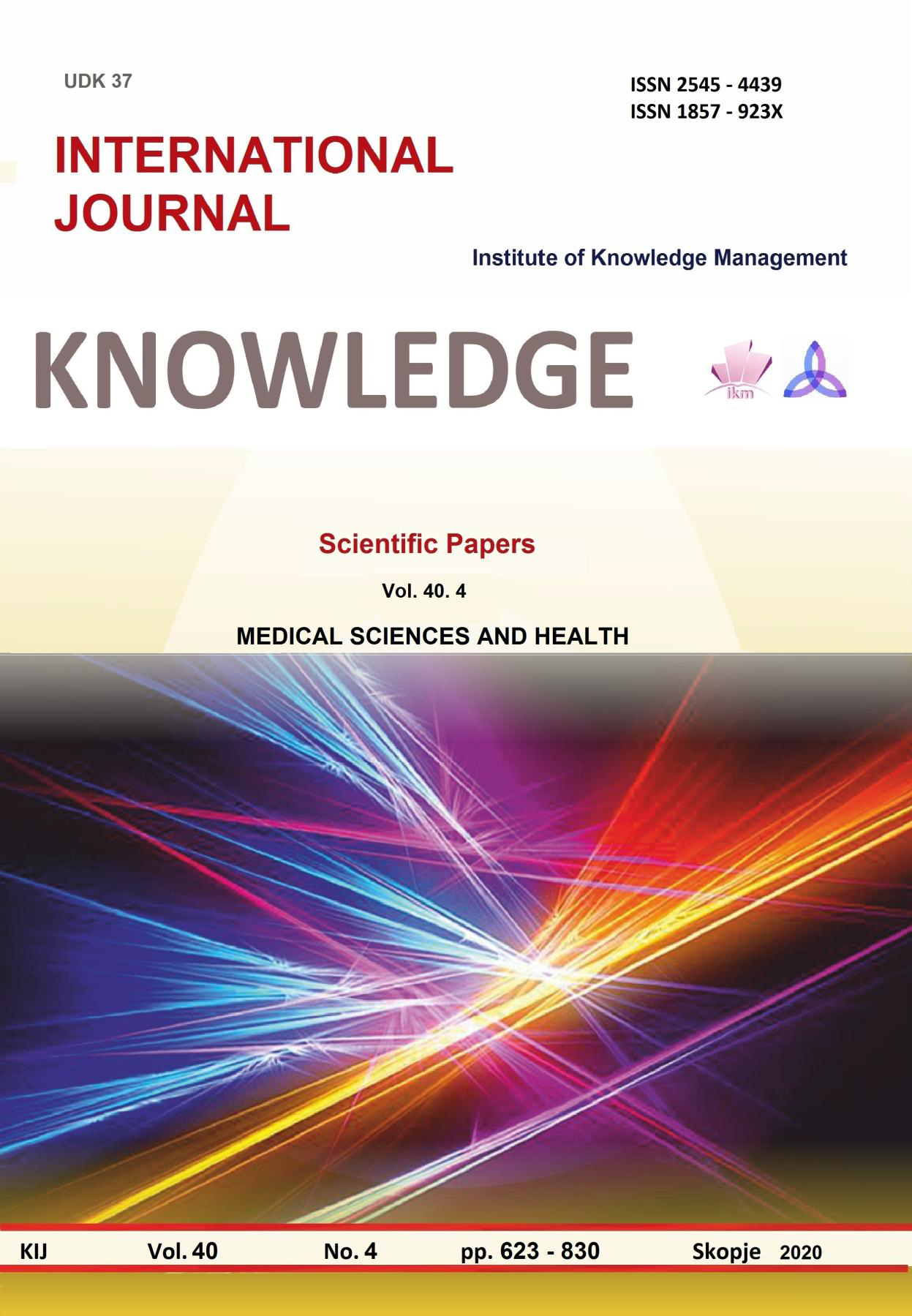EFFECT FROM THE APPLICATION OF BIODEX ISOKINETIC MACHINE IN THE REHABILITATION OF ANTERIOR CRUCIATE LIGAMENT (ACL)
EFFECT FROM THE APPLICATION OF BIODEX ISOKINETIC MACHINE IN THE REHABILITATION OF ANTERIOR CRUCIATE LIGAMENT (ACL)
Author(s): Danche Vasileva, Toshe TrajkovskiSubject(s): Social Sciences
Published by: Scientific Institute of Management and Knowledge
Keywords: Kinesitherapy; knee; anterior cruciate ligament;
Summary/Abstract: ACL injury (anterior cruciate ligament of the knee) is a rare but very serious injury in footballers that results in damage to active and passive knee stabilizers as well as neurovascular damage. Surgical treatment of this injury is very important, as is the role of the kinesitherapist in preoperative and postoperative rehabilitation. Of all the ligaments in the knee, the cruciate ligaments are the most important in providing stability to anterior / posterior movement in the knee. The primary function of ACL is to prevent pre-slip tibia. At full extension, ACL absorbs 75% of the pre-slip load. From 30 to 90degrees knee flexion, ACL absorbs 85% of the load on the front slip. In addition, other ACL functions include counteracting the internal rotation of the tibia and in the case of injury to the collateral ligaments ACL opposes the varus / valgus position of the tibia. ACL lesion leads to knee instability. There are several studies that have been conducted to determine the biomechanical features of ACL. However, so far no single unique test has been performed to determine the stretching rate of ACL. Several studies have shown that the front bundles of ACL have a higher maximum strain pressure than the rear bundles. The ACL's tensile strength is about 2,200 Newtons, and that force changes with age and repetitiveloads.The aim is to study the effect of using a biodex isokinetic machine in the rehabilitation of the anterior cruciate ligament (ACL) in the knee. Material and methods: A patient with a anterior cruciate ligament injury was included in the study. The patient is 38 years old; has been diagnosed with a complete rupture of the anterior cruciate ligament and has been surgically treated with ligamentoplasty. The respondent underwent a specialized kinesitherapy method, based on current principles of kinesitherapy in case of injury to the anterior cruciate ligament (ACL). For the purpose of the research, a complex of diagnostic methods was applied, and the results that were evaluated on the 1st day, the 15th day, the 1st month, the 2nd month, the 3rd month and the 4th month from the beginning of the research are shown on the worksheet. Assessed: centimetry (cm) of the thigh, knee mobility test (goniometry) and muscle strength test of the thigh. Kinesitherapy techniques will be applied differently depending on the stages of injury rehabilitation (acute phase, subacute phase, functional activity phase, and stabilization phase). They are based on the basic principles of modern rehabilitation: to be individual, intensive and specifically oriented -harmonized and focused on the individual needs of the athlete; to be realized with active participation. Results and discussion: There is an improvement in all evaluated parameters with the application of the specialized kinesitherapy protocol. The combination of: (physical procedures, corrective exercises, crutch exercises, exercises to improve the mobility of the knee joint, exercises to improve muscle strength and trophism and exercises to stimulate proprioceptors) area prerequisite for complete physical and mental rehabilitation of the athlete. Conclusion: Improving the functional capabilities of the knee joint is associated with the use of a biodex isokinetic machine as a complement to the specialized kinesitherapy method.
Journal: Knowledge - International Journal
- Issue Year: 40/2020
- Issue No: 4
- Page Range: 761 - 766
- Page Count: 6
- Language: English

